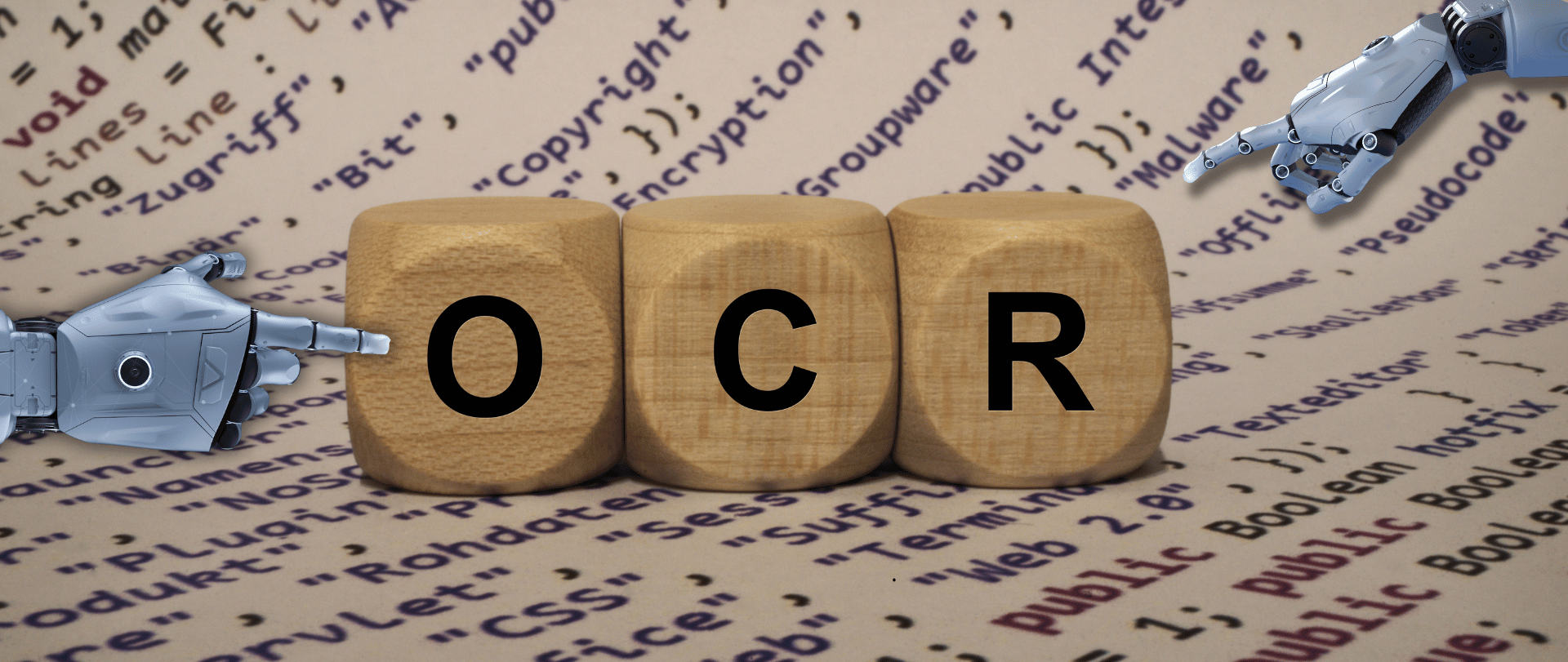10 Key Benefits of Intelligent Document Processing

Did you know that as much as 80% of the data generated and processed by enterprises is unstructured?
Today’s organizations operate in an environment of ever-increasing information overload, and managing this complexity has become a major challenge. That is precisely why this article presents the 10 most important advantages of intelligent document processing.
1. Stay one step ahead of the competition
OCR (Optical Character Recognition) is a well-established tool for image-based text analysis. However, its applications and capabilities have evolved significantly over time. AI-driven solutions are the result of advanced algorithmic development tailored to meet specific operational needs within modern enterprises.
Just as the internet of ten years ago bears little resemblance to today’s dynamic digital landscape, the expectations placed on document processing technologies have shifted dramatically.
Key advantages of Plus AI OCR over traditional OCR include:
- Enhanced performance on low-quality documents (e.g., distorted or poorly scanned images).
- Multilingual text recognition, including support for non-standard fonts and character sets.
- Capability to process both unstructured and semi-structured data.
Importantly, Plus AI OCR systems are capable of adapting to evolving document layouts without the need for manual configuration, ensuring high scalability and consistent, predictable performance.
2. You can increase your organization’s efficiency and free up valuable resources
The implementation of Plus AI OCR translates into measurable business benefits.
Organizations adopting advanced AI-based OCR solutions report:
80%
reduction in time spent on data validation
89%
reduction in time spent on manual data entry
99%
data accuracy rate
For organizations processing tens or even hundreds of thousands of documents each month (such as invoices, contracts, reports, and declarations), annual savings can reach hundreds of thousands—or even millions—of PLN.
Moreover, faster access to information directly enhances the quality and speed of managerial decision-making
There is only one answer to the question: “How much is the time worth that disappears every day into binders and paperwork?” And the answer is: a lot. Fortunately, there are tools available that can significantly reduce that cost—without putting a strain on your company’s budget.

Tomasz Szlachta
Head of Sales and Marketing
3. You can identify the bottleneck in your industry.
Time-consuming processes, delays in document workflows, and data errors—these are not abstract concepts, but real obstacles that limit business efficiency on a daily basis. Plus AI OCR doesn’t claim to solve “everything.” It delivers results exactly where manual document handling slows down decisions and drives up costs.
Every industry has its own pressure points, and technology delivers the most value when it addresses specific operational challenges.
Finance and Banking
- Automated processing of loan and leasing applications
- Identity verification based on scanned documents.
- Handling of invoices and bank statements.
Administration
- Digitization of records and registers.
- Information retrieval from archived documents.
- Extraction of data from forms and official documents.
Logistics and Transportation
- Processing of waybills (CMR), delivery confirmations, and acceptance reports.
- Recognition of customs and cargo documents.
Manufacturing and Industry
- Registration of production inspection reports.
- Automated verification of quality and compliance certificates.
4. You Can Enhance Security and Quality
Automated data processing requires strict compliance with legal regulations, including GDPR and relevant industry standards. Modern AI OCR systems provide:
- Data encryption
- Access control and activity logging
- Anonymization of sensitive data
- Auditable logs and compliance with ISO 27001
It is also crucial to ensure system auditability – a capability that was a major limitation of traditional OCR solutions.
5.You can increase your employees’ productivity
According to research conducted by Vanguard Global Chief Economist Joe Davis, artificial intelligence has the potential to automate approximately 25% of current working hours—which, in practical terms, is equivalent to gaining one full workday per week.
Rather than fueling fears of job loss, AI is increasingly seen as an opportunity to redirect employee efforts toward higher-value, more strategic tasks.
By 2035, the integration of AI could boost productivity by up to 20%, potentially increasing annual GDP growth to 3% in the 2030s.
It’s important to remember that task monotony is often the first step toward burnout. The losses organizations incur due to repetitive, mechanical workflows are significant—not only in financial terms.
Experts point out that repetitive tasks negatively affect employee engagement. Most employees seek a sense of purpose and tangible impact in their work. When that’s missing, motivation declines, frustration builds up, and in the long run, the risk of professional burnout increases significantly.
Plus AI OCR aligns with this philosophy by significantly reducing the burden of monotonous tasks related to manual document processing—such as entering invoice data, sorting forms, or verifying reference numbers.
As a result, employees can focus on analysis and decision-making, which directly contributes to greater efficiency and higher job satisfaction.
6. You can enhance your customer experience.
AI OCR is often associated with back-office operations, but its impact on customer experience is both real and measurable—even if indirect. A customer’s experience is shaped not only by interactions with sales or support teams, but also by how quickly and efficiently a company processes the documents they submit—whether it’s a loan application, a claims form, or an administrative approval.
Consumers who have grown accustomed to advanced, intelligent interactions are increasingly noticing differences in service quality between brands. As many as 70% of respondents acknowledge a clear gap between companies that effectively leverage AI in customer service and those that do not.
Plus AI OCR streamlines this often “invisible” stage of customer service by automating the extraction, verification, and transfer of data into internal systems. From the end user’s perspective, this results in shorter wait times, less frustration, and ultimately a higher level of trust in the organization.
7. You can improve compliance and information management
In large organizations operating in regulated environments—such as the financial, insurance, or public sectors—operational compliance and data quality are integral to managing business risk. Plus AI OCR supports companies in maintaining regulatory compliance by enabling fast and accurate extraction and classification of documents according to predefined categories.
Plus AI OCR identifies sensitive data, supports retention policies and access control, and streamlines document workflows by eliminating duplicates and errors. As a result, the organization gains greater transparency and audit readiness—both internal and external. Without a doubt, this represents a significant added value for many companies.

Marek Adamczyk
Managing Director
8. Gain a reliable partner in real-world business transformation
The market is seeing a growing number of AI OCR solutions ready for integration with ERP systems, workflow platforms, and document management tools. It is worth focusing on solutions that offer not only text recognition capabilities, but also:
- Advanced document classification
- The ability to train models on your own data
- Out-of-the-box integrations with workflow tools
It’s important to recognize that traditional OCR often results in incomplete data, formatting errors, and difficulties in correctly interpreting non-standard document layouts. This is because standard OCR relies on static pattern matching, without understanding the context or structure of the content. As a result, it often requires manual verification and data entry by employees, which significantly slows down the process and increases the risk of errors.
In contrast, AI-powered OCR eliminates many of these issues.
Thanks to the use of machine learning algorithms, it offers:
- Does not require manual template configuration
- Operates faster and with greater flexibility
- Enables automatic extraction of additional information, such as custom fields, tables, and complex data structures
- Handles low-quality or non-standard document layouts more effectively
A prime example of this approach is Plus AI OCR, which serves as an integral component of a broader business process automation ecosystem. This solution is distinguished not only by its high data extraction accuracy, but also by its ability to learn from client-specific data and its full compliance with European regulatory requirements.
9. You can unify knowledge across the organization.
Plus AI OCR enables organizations to transform fragmented, inconsistent sources of documentation into a structured knowledge base. Through intelligent indexing and content classification, information becomes easier to access, analyze, and reuse across various business processes. This enhances knowledge management, streamlines onboarding, accelerates reporting, and helps eliminate information silos.
10. You can become a digital transformation pioneer in your niche
Digital transformation is no longer a vision of the future—it is an ongoing process that continues to accelerate. Organizations investing in modern technologies today are not only optimizing current operations, but also laying the foundation for tomorrow’s competitive advantage.
In the coming years, AI OCR technology is expected to evolve further in areas such as:
- Large-scale handwriting recognition
- Integration with Robotic Process Automation (RPA) systems
- Federated learning to enhance privacy protection
- Real-time OCR capabilities in mobile applications
- Generative AI supporting document classification and analysis
Organizations classified as early adopters are 128% more likely to report a high return on investment (ROI) from AI tools in the area of customer experience (CX).
Summary: An Investment in Efficiency and Data Quality
AI OCR is no longer a niche IT tool—it has become a cornerstone of digital document transformation.
For large enterprises, it’s not just about cost savings, but also about operational scalability, improved information management, and greater regulatory compliance.
Organizations that are already investing in AI OCR solutions are gaining a tangible competitive advantage. This is a quiet revolution—not taking place at the level of high-level strategy, but in the everyday reality of working with documents.
And contrary to popular belief, it doesn’t require massive investment—just a decision to implement a solution that becomes an invisible yet reliable partner in your organization.
Want to process documents in your company 3x faster? Learn more.

